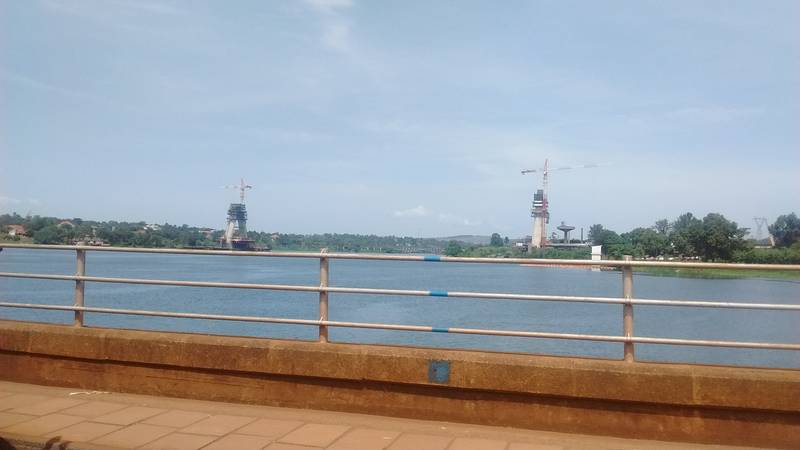Passing Jinja bridge
The structure you’re referring to is known as Owen Falls Dam, also called Nalubaale Power Station. It spans across one of Africa’s most iconic rivers—the River Nile—in the city of Jinja in eastern Uganda. The dam was constructed primarily for hydroelectric power generation, harnessing the energy from the river’s flow.
Jinja is often referred to as “the source of the Nile” because it lies near where Lake Victoria discharges into what becomes known downstream as one of Africa’s longest rivers and a crucial waterway historically significant in Egyptian civilization. The Owen Falls Dam plays an essential role not only for Uganda but also regionally, contributing significantly to electricity supply.
The dam is named after Sir Harry Hamilton Johnston’s wife, Rosine Mary Caroline (née Owen). It was completed by the British colonial government during their rule and has since been a vital piece of infrastructure in Uganda. The Nalubaale Power Station associated with this dam generates substantial hydroelectric power that supports both industrial activities and domestic consumption across various parts of Uganda.
In addition to its functional importance, Jinja is also known for adventure tourism related to the Nile River’s rapids; many tourists come here specifically for white-water rafting. The city offers a blend of historical significance due to colonial heritage sites like this dam alongside natural beauty provided by Lake Victoria and other nearby attractions that draw visitors from around the globe.
Overall, Owen Falls Dam stands as an emblematic symbol representing Uganda’s progress in harnessing renewable energy while also being steeped deeply within its rich cultural history tied closely with Africa’s most famous river system.
